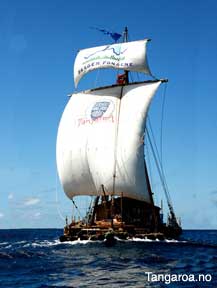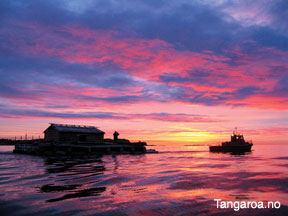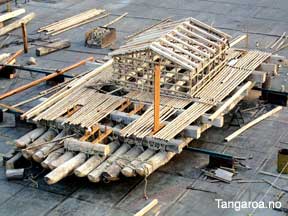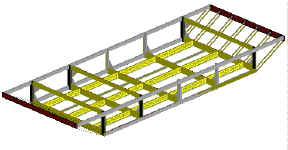A great Article, Incas and Spaniards rafting technique.
http://www.21stcenturysciencetech.com/articles/fall%202003/Guara.html“An invention hitherto unknown to the most intelligent nations of Europe, a
guara being let down in the fore-part of a vessel must make her luff up, and by taking it out she will bear away or fall off. Likewise, on a
guara’s being let down at the stern, she will bear away, and by taking out of the water, the balsa will luff, or keep nearer to the wind. Such is the method used by the Indians in steering the balsas, and sometimes they use five or six
guaras, to prevent the balsa from making leeway. The method of steering by these
guaras is so easy and simple, that when once the balsa is put in her proper course, one only is made use of, raising and lowering it as occasions require, and thus the balsa is always kept in her intended direction” (
Kon-
tiki, pp. 117-118).
So, these shabby boards act very much like a keel, help the boat stay on course, and add control to bulky rafts.
PS: "Luff up" is turn into the wind or stop.
"leeway" is when a boat is pushed sideways off course due to the wind.

Excerpt from the
Tangaroa Raft's blog, which rafted the Pacific.
http://azer.com/aiweb/categories/magazine/ai144_folder/144_articles/144_tangaroa.html"We also were able to carry out some very interesting experiments with the use of the
guara boards, testing the speed and steering limitations of the ancient balsa raft. Our experience at sea convinced us that the craftsmen who made such rafts probably could have gone very far in such vessels, without ever being concerned about the possibility of sinking.
To maintain control of the raft, you need large sails, along with the knowledge of how to handle them. We used sails that were three times larger than those on
Kon-
Tiki. The idealized sketches [illustrating this article] show how the
Tangaroa was equipped with several keels. In Peru they call these keels "
guaras".
They are boards, about 12-feet in length, a couple of inches thick, and about 20 inches wide. They're made of heavy and durable wood. These boards have holes drilled through them spaced several centimeters apart, starting from the top and extending about half way down, through which wooden pins can be inserted. The pins are about a foot long with a two-inch diameter. The boards serve as a sort of rudder to steer the raft. They are constructed so that they can slide into specific slots between the bamboo floor and the balsa hull logs. These boards provide a surface area, which offer some resistance in the water beneath the vessel.
The
Kon-
Tiki raft was equipped with four such centerboards but they were "fixed" and could not be raised or lowered. However, the whole point of this clever invention is to raise or lower the boards depending upon the winds and currents. When the wind is constant, the direction and course of the vessel can be changed if you move the boards to a higher or lower position. For example, if you raise one of them 20 centimeters, the course can change 20 degrees. So by lifting them up and down, we learned how to steer the raft the way ancient man did. We discovered that we could even steer directly into the wind."
"...Vital
Alsar, who organized the expedition of La Balsa raft, used
guara boards on his raft in 1970 - the craft he used to sail between Peru all the way to Australia. By then it was understood how to use them....In 1953, he carried out an experiment in Ecuador with a small raft using the
guara to understand how this mechanism worked. He wrote about the dexterity of the centerboards in several of his books, including "Early Man and the Ocean" (1978)."
The
Tangaro Raft...




















